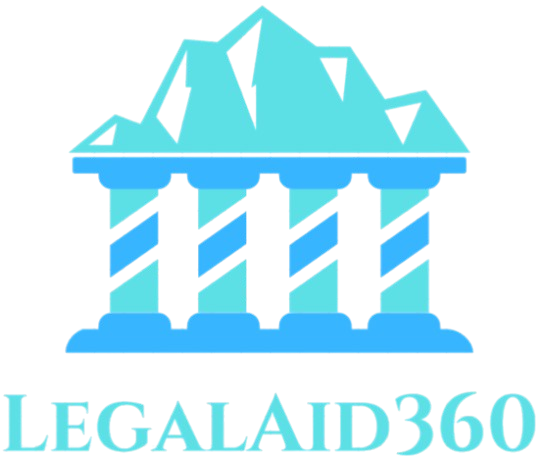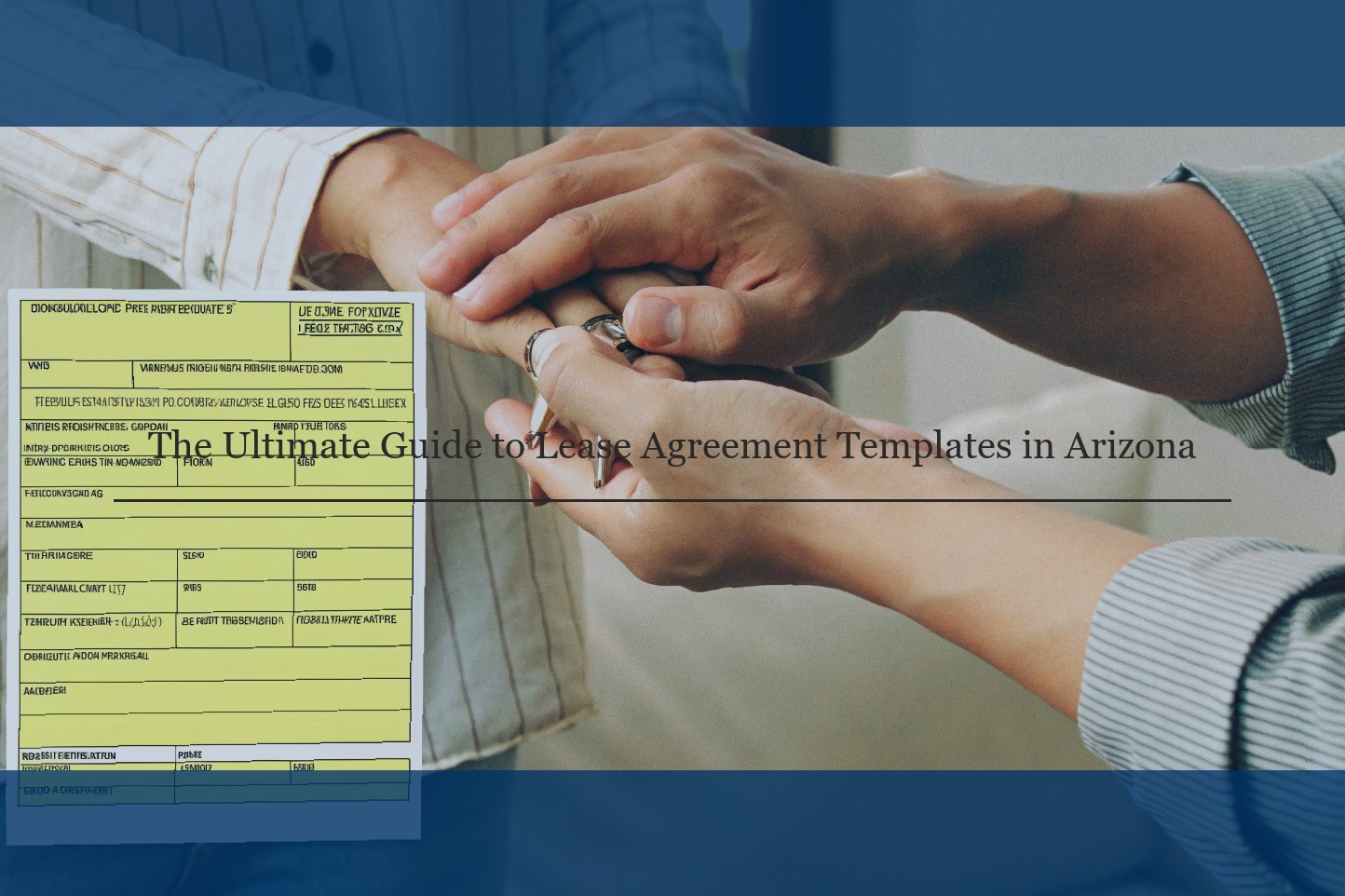The Ultimate Guide to Lease Agreement Templates in Arizona
Arizona Lease Agreements Explained
A lease agreement is the formal rental contract between a landlord and a tenant. In Arizona, lease agreements are generally based on negotiated terms and are private (non-government) agreements. Arizona law also requires landlords to disclose any known lead-based substance, hazardous substance or environmental hazard on the premises to renters because of federal law concerning lead-based paint.
There are two types of lease agreements, verbal and written, in Arizona. Verbal agreements are enforceable under the Arizona Residential Landlord and Tenant Act if several conditions are met. However, a written lease is recommended for both parties because it clearly sets out rights, obligations, responsibilities and locations.
A rental lease agreement may be written for a term of days, months or years, depending on what both parties agree. Short-term agreements are typically written for five days , while long-term agreements can be 12 months or longer. A written lease should be signed by both parties and contain the following information:
Arizona landlords are required by law to give tenants a written copy of the rental agreement if requested. When parties enter into a rental agreement, the landlord becomes bound by the provisions of the agreement and any additional provisions that the law makes part of the agreement.
A landlord who does not supply a written lease agreement to a tenant within 10 days becomes subject to all limitations of the lease agreement agreed by the parties. For example, a landlord who does not provide a written lease must allow the tenant to stay at the property for the duration of the verbal lease. In this instance, the time period is usually a year unless otherwise agreed. This provision can be very costly to owners with short-term rental properties.
Essential Components of an Arizona Lease Agreement
When you’re drafting a residential lease agreement in Arizona, or you’re faced with reviewing one that a landlord has sent you, the following sections should be present regardless of what terms are further negotiated and included or excluded from the lease:
Parties: The parties’ names and identifying information should be provided; usually even a driver’s license number is included. In the case of an apartment association leasing to a tenant, the lease will be signed by an agent of the association and will provide the name, address and contact information for any persons that will be the primary contact for the tenant.
Property Description: The property, including the unit number should be clearly described, as should any common areas that are also leased as part of attachment A or as a separate lease addendum.
Lease Term: It should be clear if this is a month to month lease term or a fixed term. If it is a fixed term, it should be clear when the lease begins and ends.
Rent Payments: The monthly rent amount and how it is to be paid should be clearly set out. It should be stated whether the rent is due at the beginning of the month, on the first of the month or after the tenth of the month. Landlords may not charge higher than five percent of the rent amount as a late fee if the rent is paid within five days of being due, and lease agreements should not state otherwise.
Security Deposit: It should be made clear if there is a security deposit, how much it is, when it is due, and if and when it is applied to the last month of the lease or can be withheld if other terms are violated. There are provisions for how security deposits may be retained in A.R.S. § 33-1321 et seq.
Utilities: The lease should provide information on what utilities (if any) the landlord will pay and what the tenant is responsible for.
Entry to the Property: The landlord should provide information as to when they may enter the property if repairs, inspections, or other entry requires advance notice and/or "reasonable hours" of entry.
EVICTION. —The only way to legally evict a tenant is after proper notice as provided in A.R.S. § 33-361 and through the judicial process. Moreover, no Arizona lease may include a waiver of the tenant’s rights to evict.
Legal Necessities for Lease Agreements in Arizona
The state of Arizona has a comprehensive set of regulations concerning lease agreements to which both landlords and tenants must adhere. For any lease agreement, whether residential or commercial, landlords are required by Arizona law to provide a copy to their tenants. Both parties must acknowledge in writing that they received and reviewed the document prior to signing. If a landlord fails to do so, a court can order the landlord to pay an amount equal to one month’s rent in damages.
In addition, any lease agreements involving more than one tenant must contain a separate signature line for each tenant. Arizona law explicitly states that an individual tenant signing on behalf of other tenants (like a lessee signing on behalf of sublessees) does not assume liability for those co-tenants. By signing for all other individuals, that individual tenant is acknowledging that the entities listed on the lease are ultimately responsible for the agreement.
Arizona law also requires all landlords to use non-technical language that is written so that a person with average intelligence would understand it. Lease agreements cannot have statements that encourage unfair dealing, limit a tenant’s rights or be vague concerning the rights of the parties. For instance, the law requires that landlords state the exact rent price, with no qualifications or stipulations. Although the law does not mandate the typeface or size, it must be legible to the average reader. If a lease agreement is not in compliance with Arizona law, a court can void the contract based on unfair contract terms.
Creating a Template for a Lease Agreement in Arizona
Creating a lease agreement template for Arizona may seem like a daunting question, but breaking it down step by step makes the task much easier.
- Step 1: Decide on Property Address – If you own multiple properties, you can create a template that is general enough to apply to all units, but still includes data such as the property address.
- Step 2: Personalize with Owner’s Name – This document is essentially a contract, so you will want to personalize it with your name. Note that there are different rules in Arizona with regard to commercial and residential properties, so be sure to consult with a professional familiar with the laws in the state.
- Step 3: Include the Unit – You will also want to inform the tenant of which unit they are renting. For instance, Unit 1000-1.
- Step 4: Date – The date should be recorded on and at the top of the document, so you can reference it later if need be .
- Step 5: Both Tenant & Landlord – Make sure to include the names of the landlord and the tenant. You may elect to include the phone numbers of the parties and request an email address.
- Step 6: Lease Specifics – At the top of each page, you should include the relevant specifics for the lease. For instance, Specify the start date, duration, monthly rent, security deposit minimum and maximum, rent payment details, and late fees. Include all of the particular items decided by the landlord and tenant that will be helpful for future reference.
- Step 7: Signatures – Do not forget to include blank spaces for both parties to sign.
- Step 8: Print Copies – Once you have a completed template, print copies for the tenant and landlord. Make sure that you maintain an extra copy for your records. A real estate advisor can help you navigate creating a lease agreement template for Arizona.
Frequent Errors to Avoid in Arizona Lease Agreements
As important and vital as it is to understand the "rules of the road" when actually driving down that metaphorical track, it is equally essential to know what mistakes to avoid when drafting a lease agreement for Arizona properties, because when it comes to disputes over such issues, it is the wording which governs.
Andrew Zucker, Sr. has been representing landlords, property management companies and developers, as well as tenants, in a wide range of matters for over 30 years. Mr. Zucker also has expertise in property management law, and in both administrative and appellate proceedings. He has handled regulatory matters and is well known for protecting related investments.
Do not allow anywhere in the document any language which allows the tenant to terminate without cause. Such provisions often sound benign, but can be worth huge amounts of money if not clearly specified. The typical provision allows the tenant to give the landlord some notice (usually 30 days) without having any grounds for such action. This may make sense at first thought, but in practice it can be a major error for the landlord.
Another pitfall to avoid is failure to ensure that each member of a married couple sign the agreement. In Arizona, both spouses are equally liable for the deal, so when only one signs, there is a risk that the other will deny the contract and the landlord will have no recourse.
Above all, make certain that your plan is actually what the document is truly specifying. It is essential to engage an experienced, qualified real estate attorney to thoroughly review your document before you sign it.
Sources for Authentic Lease Agreement Templates in Arizona
The most trustworthy and legally compliant lease agreement templates in Arizona can be found both online and offline. Online, the best source is the Arizona Secretary of State’s website. Many independent publishers have posted trustworthy lease templates that comply with Arizona laws. Some are even Adobe Acrobat PDFs that have free downloads or limited-time free trials. However, be careful. A simple search for "lease templates free download" on Google will result is a slew of websites offering what appears to be free leases, but they often require a subscription or membership fee before the user can use the template.
Another reliable online source is Zillow. The website has posted free downloadable lease templates with an easy-to-follow process for customizing specific details about the property , tenant(s), and landlord. The site also offers other services related to leasing, such as 3D tours and rental payment options.
Offline, you can find comprehensive and trustworthy lease agreements at most big box office supply stores, where publishers like LegalZoom, Nolo, and Rocket Lawyer have in-store displays with these templates. There are also print book versions available at Barnes & Noble. Additionally, local independent bookstores and public law libraries may have a few trustworthy lease agreements available. Finally, we recommend that you purchase them from your favorite law book store. A local lawyer should be able to provide you with a comprehensive and trustworthy lease agreement template.

